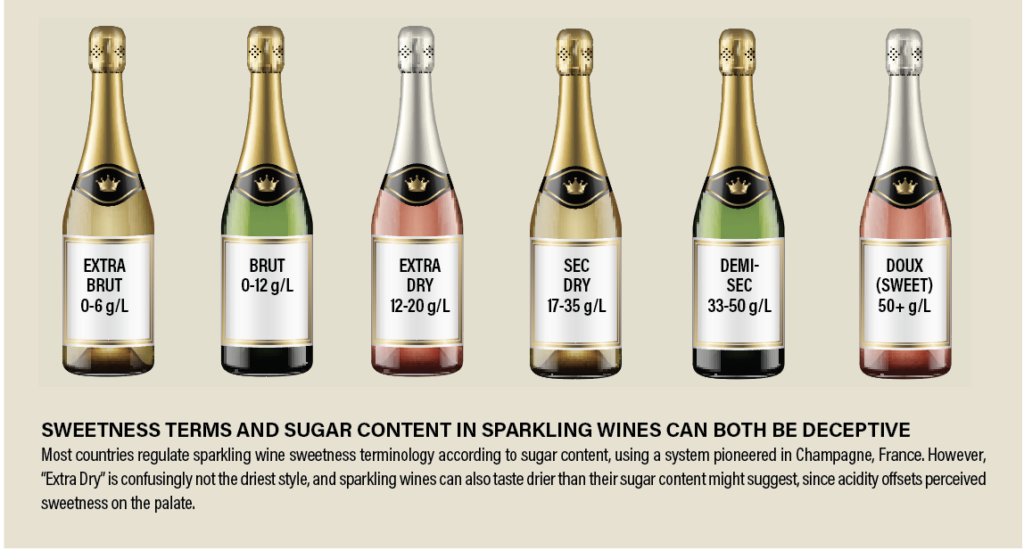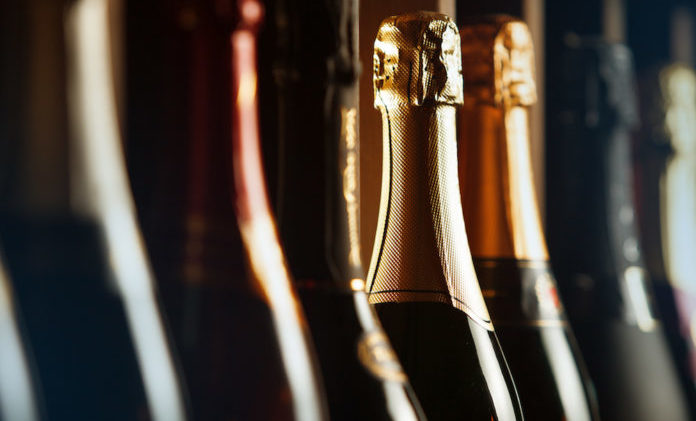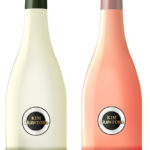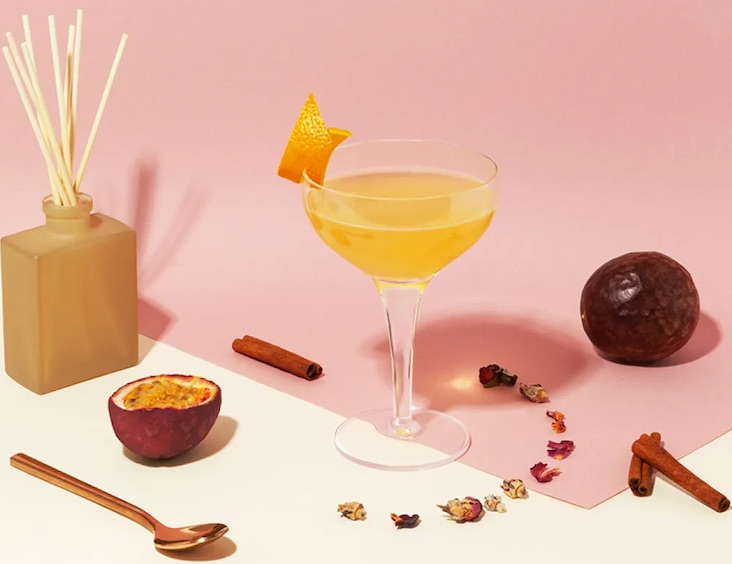Bubbly wines are made differently than still wines, of course. There are three main styles, which are based on the European wine they emulate during the method of production:
- Champagne – Fermented twice, with second fermentation in sealed bottles, using the “Traditional Method.” Flavor, texture and mousse are enhanced by long-term aging on yeast sediments, or lees. These wines are most often dry to bone-dry.
- Prosecco – Fermented twice, with second fermentation in pressurized tanks, using the “Charmat Method.” The wine is typically slightly sweeter, and must be bottled and sold quickly to preserve its freshness and pleasantly fruity taste.
- Asti – One single fermentation is interrupted halfway to preserve high levels of grape sugar and suppress alcohol content in the “Ancestral Method.” These wines are fully sweet and do not age well.
One of the most noticeable distinctions between styles is their sweetness. But the regulated label terminology used to indicate sugar content can be hard for wine drinkers to decipher. Some sweetness designations, such as “brut,” are unique to sparkling wines, while others, like “extra dry,” can be misleading despite seeming more straightforward. However, they all make more sense with historical context.
When French Champagne first became popular in the early 18th century, the style caught on as an expensive novelty item that we would now consider dessert wine. Most were dosed with over 50 grams of cane sugar per liter, at a level we would now call “Doux,” or sweet. As bubbly wine became more fashionable in the royal courts of Europe, demand grew for drier styles to serve with dinner. So vintners added less sugar and labeled these bottlings as “Demi-Sec” or “Sec,” meaning half-dry or dry. But even these were still quite sweet by modern standards.
When merchants kept requesting even-drier wines, vintners who had used the word dry for a sweetish wine had to come up with a new word to signify “drier than dry.” Thus the term “Brut,” meaning savage or unrefined, conveying a near-total absence of sweetening.

Formerly the director of wine studies for Manhattan’s French Culinary Institute, Marnie Old is best known for her books published by DK: the award-winning Wine: A Tasting Course and He Said Beer, She Said Wine. Read her piece Why Grape Ripeness Trumps Variety.









